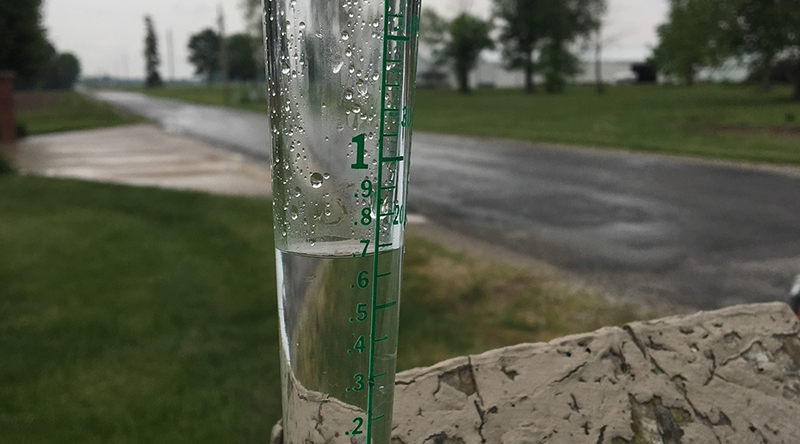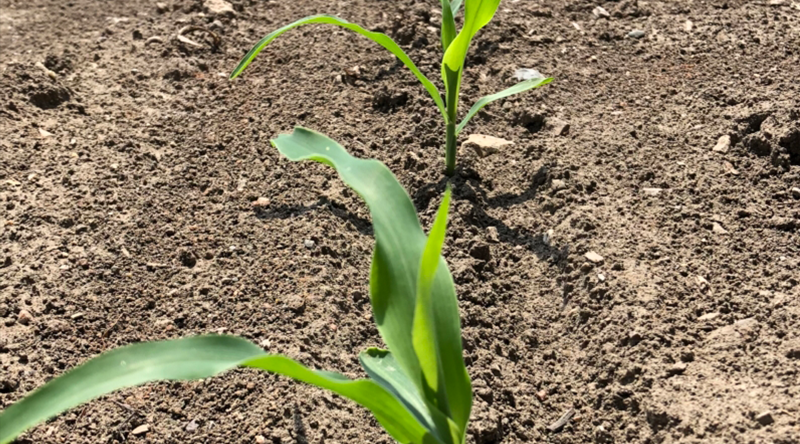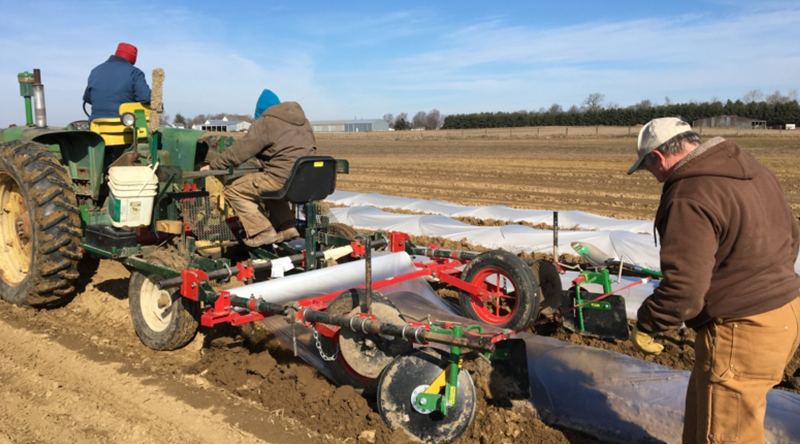One of the most asked questions we’ve received at the farmers markets this year is, “how has the weather affected you? or “what was the impact of all that rain?” So to help understand a bit more of the science behind growing corn and the impact of the weather we’ve experienced this year, we’ve asked Eric and Samantha Miller to help explain in more detail. They are experts in the science of soil and crop management (also known as agronomists) and here’s what they had to say when we posed the question of “what was the impact of all that rain?”
Excessive Rain: The Root of 2019 Production Challenges
Think about your household’s budget. You depend upon income and plan expenses accordingly. Now, imagine what would happen if you had zero income for 25% of the year. If you’re like most families, the budget would take a hit- you’d have to cut way back on expenses, and even then, you might run short.
Well, the 2019 corn crop was planted late. Extremely late. For a corn plant, late planting means days going by with no “income”. Think back to April and May- rainy day after rainy day probably put a damper on your spring break and your kids got tired of staying inside after school. We had record rainfall in the spring, and farmers couldn’t get into the field to plant. Late planting is missed opportunity, and our crop has paid the price. You may notice as you drive through the countryside that some fields have blank places where the soil stayed too wet for too long and our seeds just couldn’t grow.
One-two punch
Excess rain is a one-two punch for corn. First, late planting itself reduces the number of days that a corn plant can develop to capture sunlight, which eventually translates to producing kernels. The plants are smaller, which means a smaller factory for packing all the sweetness into the ear. Remember those blank spots in the field that we mentioned above? That also means that there are fewer plants total in the crop. In addition to these factors, there is the problem you can’t see driving by- lying just beneath the soil surface.
In this part of Indiana, we have a fair amount of clay in our soils. Add in excess moisture, and the soil becomes like play-doh. The roots have trouble getting through the hard pack, and the plants get reduced access to nutrients. Small root systems mean that when the weather turns dry- like it did in July and August- the plants that were drowning earlier in the year are more susceptible to drought. Drought makes the plants shut down early, they go into survival mode. You might notice that the kernels on the small end of the ear aren’t fully developed. Corn will cut its losses and focus on packing all of its resources into kernels further down the ear if it runs out of water.
Don’t delay
All of this is to say that the 2019 sweet corn crop has been somewhat limited. Dad and the MDSC crew have done their best to nurture the plants (including irrigating) and remain dedicated to bringing you an excellent product, but there hasn’t been excess supply. There is no making up for a late start and acres where the corn didn’t grow at all.
You may want to plan on buying your sweet corn earlier than usual- the season may not be as long as it has been in recent years. Stock up while you can- even if it means adding to your household’s sweetcorn budget.
Eric Miller was born and raised on a grain farm in north central Indiana. His passion for farming was matched by a fascination with the mechanics of how the plant and soil interact to maximize yield. Eric earned his BS and MS in Agronomy from Purdue. He went on to earn a PhD in Soil Science from Oklahoma State university. Eric enjoys most working with farmers to solve unique problems on each farm.
Samantha Miller grew up on a beach in Pensacola Florida. Her childhood was unique: if school was out, she headed north to spend time with her dad in Tennessee where he farms, gins, and warehouses cotton. Sam has BS in Agronomy from the University of Florida and a PhD in plant breeding from Purdue. Halfway through her PhD, she realized that doing science makes her cry, talking about science makes her happy. You can follow Samantha on Twitter @agronomommy






Leave A Comment